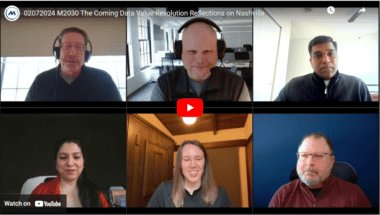The Best of the Future of Manufacturing Project
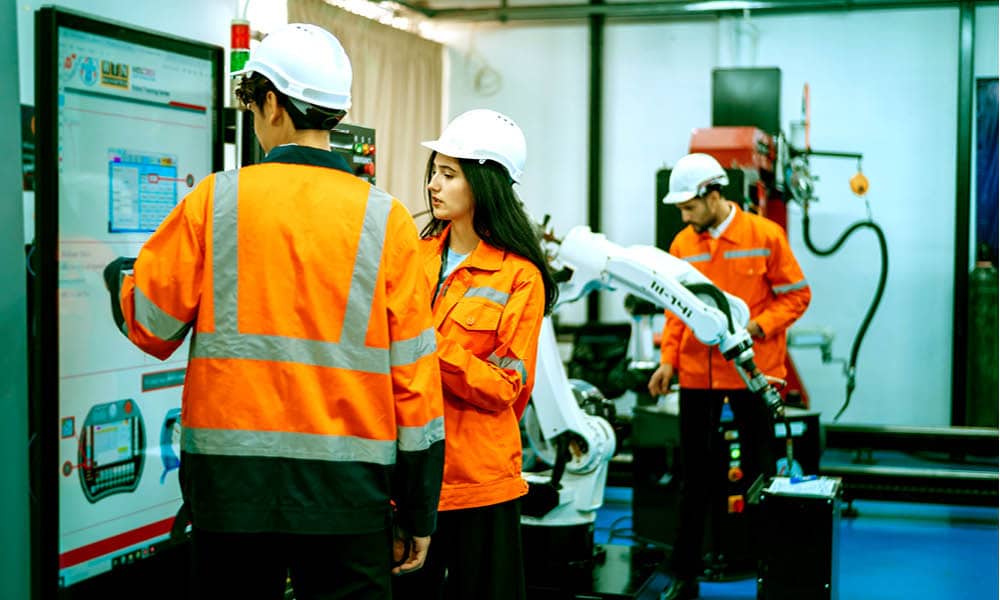
The Future of Manufacturing Project provides a how-to guide for manufacturers to achieve future success
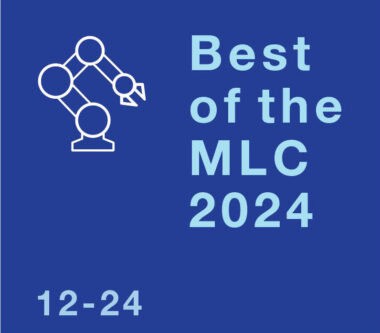
As manufacturing accelerates into a future defined by rapid innovation and transformative trends, the Manufacturing Leadership Council’s Future of Manufacturing Project has become an essential guide for industry leaders. This project continues the council’s longstanding mission to challenge manufacturers to “imagine a better future.” Through curated insights, the Future of Manufacturing Project brings clarity to the shifts that will shape industry in the years to come.
We’ve gathered some of 2024’s best articles and webinars from the Future of Manufacturing Project, each delving into critical developments that every manufacturer should know. From groundbreaking tech advances to leadership strategies for an evolving workforce, these pieces reveal how embracing change isn’t just necessary – it’s the key to thriving in manufacturing’s next era.
Future of Manufacturing Project: The Coming Data Value Revolution – Reflections on Nashville Panel Discussion
Listen in as this expert panel addresses some of the most important aspects of how manufacturers can leverage operational data to enhance their competitiveness today and in the future, including:
- What the future holds for data monetization, data ecosystems and data-driven innovation;
- How data-driven manufacturing will reshape the future workforce;
- How AI, data visualization, and industrial metaverse technologies will redefine operational excellence;
- And, drawn from the interactive sessions at the event, what manufacturers are planning to do now to prepare themselves for a data-centric future.
Access to the MLC Member Portal is required to view this video.
Seeing the Unseen: Observability in Manufacturing
Eric Danzinger, CEO and Co-Founder, Invisible AI
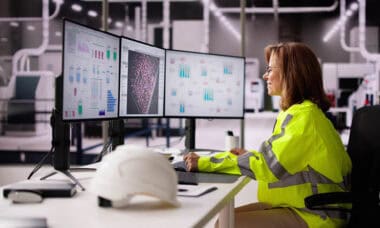
What if manufacturers could achieve the same deep visibility into operations as software engineers do with code? Explore how the principles of software observability are transforming manufacturing, making real-time monitoring and data-driven improvements possible on the factory floor.
Placing Innovation at the Heart of Transformation
David Takeuchi, Global Strategy and Transformation Business Model Innovation Leader, EY
Jerry Gootee, Global Advanced Manufacturing Sector Leader, EY
Claudio Knizek, Global Advanced Manufacturing and Mobility Leader, EY-Parthenon

To build the right foundation for long-term growth, manufacturers must put innovation and digital strategies at the heart of transformation.
Crystal Ball: Business Resilience in 2030 and the Digital Dexterity Effect
Siva Gurupackiam, Senior Vice President of Manufacturing Industry Solutions, NTT DATA

Digital transformation is today’s tested and proven path to business resilience. This era is defined less by permanence than by alacrity of adaptation. Manufacturers must already evolve their approach to business resilience to remain competitive.
About the author:

Jeff Puma is Content Director for the Manufacturing Leadership Council
The Best of 2024 Decision Compass Calls

MLC’s member-exclusive virtual working groups offer a pathway to building M4.0 value.

The MLC’s Decision Compass groups are invaluable for discovering ways to level up your business. In 2024, these five groups explored a number of important M4.0 topics, including considerations for deploying generative AI; meeting the expectations of a multigenerational workforce; how operating data can predict equipment failure; managing supply variability with cloud technologies; and innovative ways to capture and reuse carbon emissions.
These are just a sampling of what was featured in 2024. A full docket of sessions from this year and past years is available in the member-exclusive MLC content library.
Note: These recordings are archived in the MLC content library, an exclusive benefit for MLC members. Members can log in to view the recordings. Nonmembers will be asked to complete an information form to gain access.
Digital M4.0 Technologies
From Data to Insights: Generative AI as a Catalyst for the Fourth Industrial Revolution
Topic Leaders: Srinivas Kuppa, Chief Product Officer, SymphonyAI Industrial; Rahul Shahani, Partner and Industry 4.0 Leader, McKinsey & Company
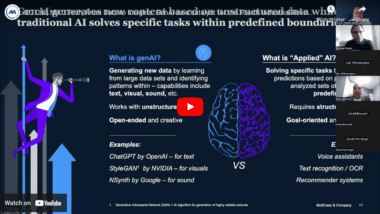
Where and how can manufacturers apply Generative AI to derive optimum value? What are the best ways to define and achieve ROI? And how does Generative AI factor into broader initiatives for digital transformation? This session dives into unlocking step-change in performance, moving past data silos, setting a strategy to scale, and more.
Next-Generation Leadership
Attracting Talent and Building Resilience in the Frontline Workforce: A Multi-Generational Approach to Employee Experience
Topic Leaders: Tyler Freeman, Associate Partner; Marino Mugayar-Baldocchi, Research Science Expert; McKinsey & Company

The current manufacturing workforce is comprised of four generations, each with their own desires and expectations within the workplace. Find out about the innovative strategies that manufacturers are using to reimagine the frontline worker experience to keep each generation engaged to boost productivity and employee retention.
Operational Excellence
Using Operating Data to Predict Equipment Failure
Topic Leaders: Tim O’Neal, Global Operations Director for Operational Excellence and Leveraged Services; Scott Lawson, Maintenance Technology Center Director; Dow

Learn more about the role of data on reliability through four different lenses: shop floor outside (from operators and maintenance teams); shop floor inside (utilizing alarm limits and operator trending); engineering analysis (key variables, inspection trends, and work order data); and AI/machine learning.
Supply Networks
Farm to Shelf: Producing, Packing and Delivering the Perfect Mandarin with IoT and Cloud Technologies
Topic Leader: Dhruba Misra, Information Technology Manager, The Wonderful Company

Meet the winner of the 2024 Manufacturing Leadership Award for Digital Supply Chains and find out how The Wonderful Company used cloud-based inventory and manufacturing systems to manage a high degree of supply variability in its production of Halos mandarins.
Sustainability and the Circular Economy
GHG Scope 1/2/3 + PCF/LCA and Carbon Capture Case Study
Topic Leader: Kevin Norfleet, Global Sustainability Director, Celanese

Many carbon capture processes capture carbon dioxide emissions and then store them to keep them out of the atmosphere. But what if those emissions could be reused for downstream production? Find out how Celanese is doing just that – and fostering circularity by using those emissions to create products that can reduce the need for fossil fuels.
About the author:

Penelope Brown is Senior Content Director for the NAM’s Manufacturing Leadership Council
Welcome New Members of the MLC December 2024
Introducing the latest new members to the Manufacturing Leadership Council


Kyle Bender
EVP
Falcon Plastics

www.falconplastics.com
![]()
https://www.linkedin.com/in/kyle-bender-84138ab7/

Bob Border
Chief Digital and Information Officer
Ingredion

www.ingredion.com
![]()
https://www.linkedin.com/in/bob-border-338493/

Evan Doepker
President and CEO
Doepker Industries Limited
![]()
https://www.doepker.com/
![]()
https://www.linkedin.com/in/evan-doepker-9b089723/

Rodolfo Luzardo
Principal
ZS
www.zs.com
![]()
https://www.linkedin.com/in/rodolfoluzardo/

Rick Organ
President and CEO
Hynes Industries
![]()
https://www.hynesindustries.com/
![]()
https://www.hynesindustries.com/about/leadership

Jon Singer
President/COO
AirLife

https://myairlife.com/
![]()
https://www.linkedin.com/in/jon-singer-5b6a492/

Colin Speakman
Digital Transformation Leader
Kalypso, a Rockwell Automation Business
![]()
https://kalypso.com/
![]()
https://www.linkedin.com/in/colinspeakman/
Dialogue: Accessibility Unlocks Untapped Talent

Angela Accurso, a Next-Generation Leadership winner, shares how accessibility through tech and training can bring untapped workers into manufacturing.
Penelope Brown: Hello everyone and welcome to our latest edition of Executive Dialogue and I’m happy to be here today with Angela Accurso who was one of our Next-Generation Leadership winners at this most recent year’s Manufacturing Leadership Awards. We had a really great crop of young leaders honored in this category this year and Angela, of course, had some really outstanding accomplishments.
Angela it’s great to have you here today.
Angela Accurso: It’s great to be here thank you for having me.
PB: And I should back up a bit. Angela is the director of workforce programs at the MxD, so much of her focus is on accessibility in manufacturing and that’s what we’re going to talk about a little bit today.
Angela much of your work is about making manufacturing more accessible to those with disabilities, so how do you define accessibility?
AA: Great question and on the baseline level, it really truly means that everyone – regardless of disability status or any other characteristics – has access to and can fully engage within the workplace within manufacturing. But as I think of it, it also goes beyond that so what can manufacturers and the workplace do to meet the physical, social and cognitive needs of every employee and also foster that sense of inclusion where everyone feels valued, everyone feels heard and actually feels that they’re a part of something larger and are appreciated for who they are as a person and what they bring to the table.
PB: Let’s talk about some of those specific things that manufacturers can do. How can a manufacturer take stock of their accessibility? And what are the some of the things that they might be able to do to improve it?
AA: There are a number of different ways to do that. First is really put in the work to undergo the training it’s not a surprise that perhaps not many workplaces have really invested in disability inclusion or disability accessibility training. There are a number of different partners within communities – whether that’s a community-based organization within your network or other folks or consultants that specialize in disability inclusion – those are certainly really great places to start.
“[Accessibility] truly means that everyone – regardless of disability status or any other characteristics – has access to and can fully engage within the workplace.”
MxD is developing an accessibility training for manufacturers as well as university and community college partners, and we’re developing that in partnership with Access Living of Metropolitan Chicago, which is a community-based organization here in the Chicagoland area and they’re part of a national network for centers for independent living and we’re developing that. Currently we’re actually undergoing in-person trainings with manufacturers across Illinois and Wisconsin, but we are developing a training that is going to be a virtual course on our virtual training center platform so individuals who would like to really prioritize disability inclusion can take those courses and understand how to learn the language of disability, how to understand how your operations can be improved, and they can do that from anywhere in the world. That’s going to be dropping in just the next month or so, but if you’re really prone to wanting to work with a community-based organization, your own community is a really great way and place to start. Doing the work and walking your talk is a really great place to showcase to your employees that you do care about disability inclusion.
Other great ways to do that are doing a full audit. How do you empower your staff to actually feel comfortable coming forward if they do have a disability? One thing I’ll illuminate to manufacturers is that you very much have employees with disabilities already working with you right now. There are 61 million people in the United States who identify as having a disability. While the rates of unemployment are higher for individuals with disabilities, there are certainly individuals with disabilities represented across every sector in the United States including manufacturing. Manufacturers may just not know that an individual has a disability because they don’t feel comfortable coming to disclose or feel perhaps their job might be at risk. We know that about 76% of employees with disabilities do not disclose that to their employer. And so employers may be thinking “Oh that’s not a need I have to meet on one side because I don’t have an employee that has actively shared that they have a disability.” Whereas employees are saying “I don’t feel comfortable fully coming forward and I can’t fully engage with work the way I want to.” So being able to analyze your current practices and how you could make your workplace more inclusive from the get-go from anybody would be a great place to start. Analyzing policies and procedures, do you have accessible infrastructure, do you have a ramp that could be useful for somebody that uses a wheelchair, those sorts of things.
A lot of those are relatively simple fixes. The median cost of a reasonable accommodation is only $500, so for relatively small investment, employers could be making really great headway for individuals who work for them.
And then also thinking about technology. Technology not just for innovation’s sake, but how you can actually use technology to create accessible working environments because we believe that technology can actually be something that levels the playing field for all individuals in the workplace.
PB: Yes, let’s dive into that a little bit. I mean obviously here at the Manufacturing Leadership Council our focus is very much on shop floor technology, so how can that be something that can bridge a gap for workers with disabilities?
AA: Some of the technologies that we discuss as emerging technologies are great use cases for disability inclusion: augmented reality, virtual reality, the use of drones or robots. You know those are things that while they have a use case for innovation that we talk about time and time again, we don’t necessarily talk about them being something that can actually support disability inclusion.
“The median cost of a reasonable accommodation is only $500, so for a relatively small investment, employers could be making really great headway.”
For an example, augmented reality. We have this on MxD’s factory floor tour. We demonstrate augmented reality in an assembly line fashion and it essentially projects through light-guided systems work instructions onto an assembly line table and provides turn-by-turn instructions for an individual to actually go through the assembly process, which is really great if you think about an individual who perhaps has a disability that impacts their memory, being able to have the turn-by-turn instructions is a great way to ensure that they’re fully comfortable with the process.
Virtual reality is also a great way to simulate what a working environment can look like before an individual even starts the work process and is great for an individual with a disability to be comfortable with what the environment will look like and gain that spatial awareness.
There are a number of different use cases where we talk about technology being a catalyst for innovation but also being a catalyst for disability inclusion. We challenge manufacturers to think a little bit about it being a win-win scenario: not only are you investing in emerging technology to help your operations run better, faster, smarter, more efficient, but you’re also allowing a whole crop of really talented people and an untapped talent pool to be able to participate in work that they perhaps haven’t been able to before.
PB: Let’s talk a little bit about that untapped talent pool because obviously manufacturers, are struggling to hire. At the end of June there were something like 900,000 unfilled jobs nationally in manufacturing and maybe that figure has been updated but I can’t imagine it’s moved very much. So I would think that creating a more accessible workplace would help to address some of that issue and could bring in more talent to a manufacturer?
AA: Absolutely. We know exactly 900,000 open manufacturing jobs and then a grimmer outlook too when you’re thinking about the end of the decade when a projected more than 2 million unfilled manufacturing jobs are expected to be lost due to a skills gap and due to retirement but also not being able to build up that talent pipeline. And we can’t keep thinking about if we, perhaps, have a vision of what an ideal worker in manufacturing looks like that doesn’t include untapped or under-engaged talent including individuals with disabilities, black and brown communities, veterans, women – these are all talent groups that really have not been engaged as much as they should be within manufacturing. As a result, we don’t have that talent pipeline to build up.
Some really great organizations including MxD, including other Manufacturing Innovation Institutes (MIIs) and other community-based organizations have seen that this is really an opportunity for manufacturers to think outside the box of what their traditional thought process is behind an ideal individual to work in manufacturing. But that also requires manufacturers to have to do the work to make sure that they’re creating workplaces that are incredibly accessible and inclusive because we’ve heard time and time again employees say, “I did the work, I went through the training, I dedicated my time to get a certificate in what my employer said, but at the end of the day I didn’t feel comfortable working there because I didn’t see myself there, I didn’t feel that I had the infrastructure there to support me, whether that be time off to leave early and pick up my kids from school or take time off for leave or at the very basic level there wasn’t a ramp for me to be able to enter the building if I use a wheelchair.”
There’s certainly a lot of individuals who understand what a great career at manufacturing can be but we need manufacturers to really understand they have to do the work to make it a great place to work.
“We need manufacturers to really understand they have to do the work to make it a great place to work.”
PB: Let’s talk a little bit about your career background. Before you came to MxD, you were working on strategic programs at YWCA, which is obviously a much different organization than heavy industry or manufacturing. How did that experience inform what you’re working to accomplish in manufacturing now?
AA: Yeah, you’re totally right. It was a completely different industry in that I came to MxD without a whole lot of technical background on manufacturing, but I certainly knew what a great economic opportunity it could be to have a manufacturing job. And the programming that I led at YWCA Chicago was aligned mostly toward their mission to eliminate racism and empower women. We had a number of different programs to do that including economic empowerment programming – programs to help women and black and brown communities get into trades jobs. That could include electricians, it could include manufacturing, but we had a number of programs to get folks into the trades and we saw individuals have just the most incredible success stories. Going from working $12 an hour to going through a 12-week training program at YWCA Chicago and graduating after that 3 months making $65,000 starting salary and with benefits. That is huge, huge, huge and it speaks to the potential of a manufacturing career. When we think about manufacturing jobs I think they can be a catalyst to rebuild the American middle class, can be a source of financial sustainability, and really making sure that folks who have not had access to those job opportunities or those career opportunities it really is a game changer for economic and financial sustainability.
These are really strong family sustaining wages that have been very strong for a really long time and is one of the really wonderful perks that manufacturing offers and a lot of what I saw at YWCA Chicago has guided the design of our MxD programming as well.
So how do we engage the under-engaged including women, minorities, veterans, individuals with disabilities and you-name-it, but also how do we get the word out about what I think is just a really great kept secret – and I don’t want it to be a great kept secret anymore: American manufacturing jobs are really, really strong and they can be such a source for economic vitality within the United States.
PB: In your nomination for the Manufacturing Leadership Awards last year, a theme that kept getting repeated over and over again was your ability to really create collaborations, especially across organizations. What do you think are keys to creating a successful collaboration?
AA: As much as I would like to say that MxD, alone, is going to close that 2 million worker gap, it’s just not feasible. No single organization is going to be able to do this alone. When you find those right partners that have that shared mission, that vision and goal are really going to be key to a strong collaboration. Often we get bogged down in the day-to-day and think that we’re the only ones focused on this work, but in reality there are a lot of really great organizations that are so aligned and so eager to partner. It could be a community college that is really ingrained in their community and really understands what their community needs and it has tapped into high schools and employers needs as well. And then perhaps how can we support them in getting great content? Or how can we be thought leaders about American manufacturing jobs and the importance of an inclusive workforce? And there is also an employer that says “I’m on it. I absolutely believe what you’re putting down and now I’m going to go out there and hire more individuals with disabilities, but I do need your support in helping me do the work.”
That’s how we can support and help with our training courses. So I think that mission alignment and goal alignment and the shared values are going to be key to really setting up any collaboration for success.
PB: Well, all of this is incredibly important and shows why you are one of our top Next-Generation Leadership winners last year. You have some tremendous insights on all of this. Thank you so much for your time today and for sharing all of this with us and we’re really excited to see what you do in the future.
AA: Thank you very much. It’s been a pleasure and an honor to be a part of this process.
PB: Thanks, Angela.
AA: Thank you. M
About the Interviewer:

Penelope Brown is Senior Content Director for the NAM’s Manufacturing Leadership Council
MLC in 2024: Photo Gallery
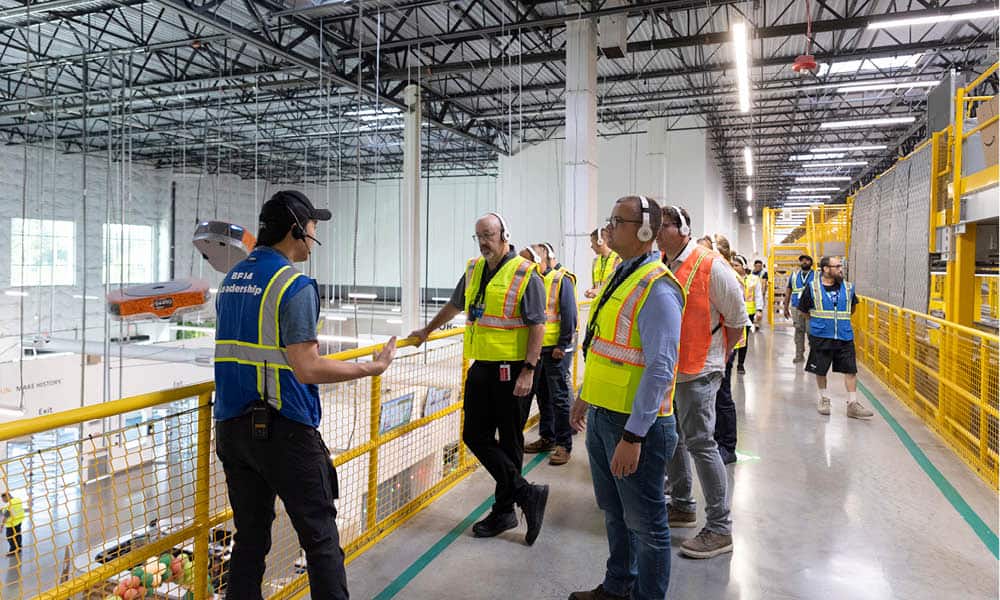
MLC events bring opportunities for networking, learning, and innovation for leaders on the M4.0 journey.

The Manufacturing Leadership Council, a division of the National Association of Manufacturers, welcomed its members and other leaders from the manufacturing community to several events in 2024, including plant tours and Rethink, the Council’s signature event. These images represent a sample of this year’s in-person events.
All images copyright of the National Association of Manufacturers (NAM).
Rethink: Accelerating Digital Transformation in Manufacturing
June 2-5, 2024 / Marco Island, FL
The MLC welcomed a record number of attendees at its flagship event in 2024, with more than 900 manufacturing leaders joining either in person or virtually for the 20th anniversary edition in Marco Island, FL. The event kicked off with an economic panel discussion over breakfast, a first-ever Women in M4.0 luncheon, and the MLC’s Annual Council Meeting. It was followed by two days of main stage content and breakout sessions to help manufacturers accelerate their digital journey.

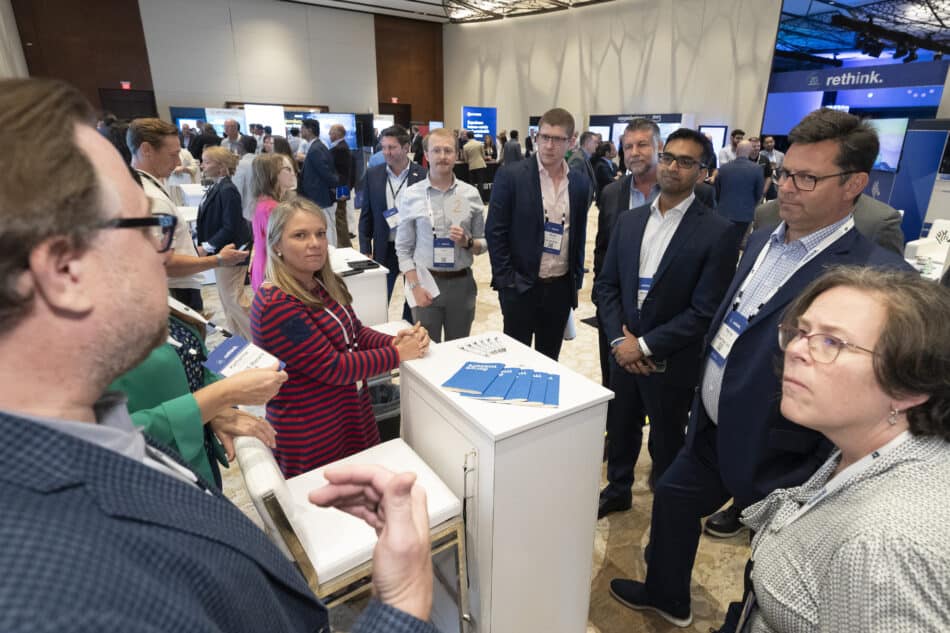

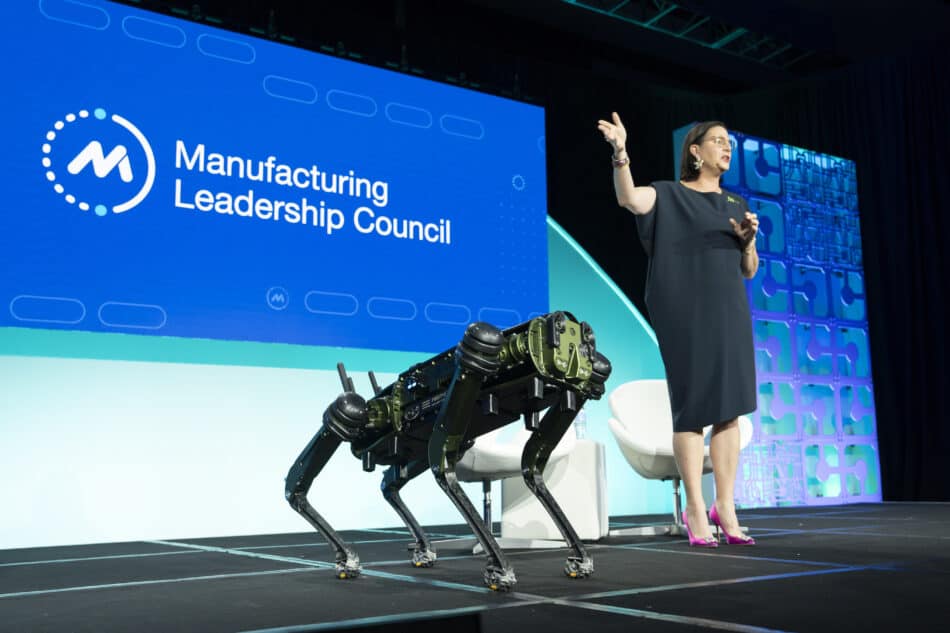

Manufacturing Leadership Awards Gala 2024
June 5, 2024 / Marco Island, FL
The 20th anniversary Manufacturing Leadership Awards Gala was a black-tie celebration of manufacturing’s world-class manufacturing innovation leaders. More than 150 digital manufacturing projects and high-performing individual leaders were recognized at the gala.

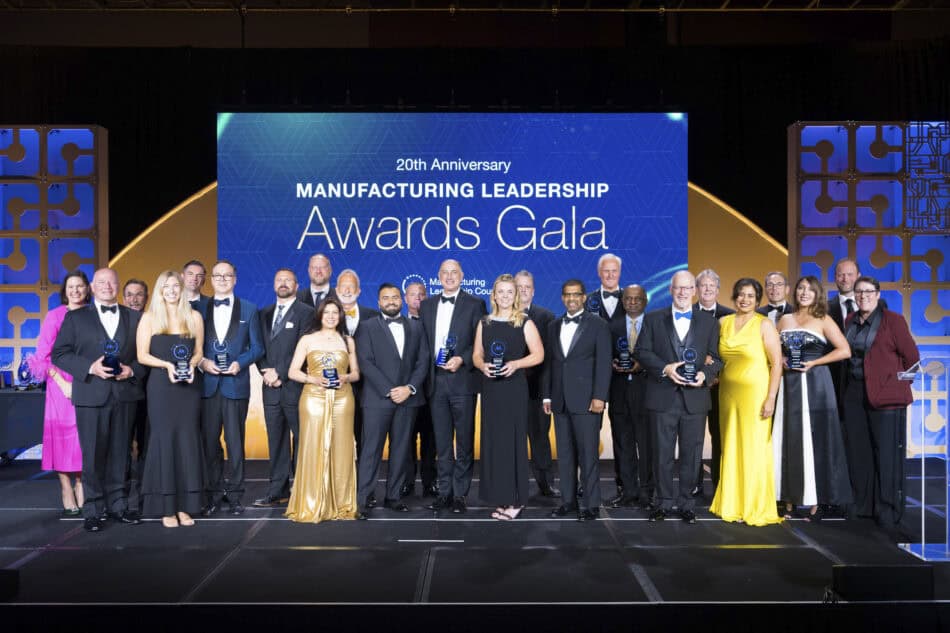



Plant Tour: Amazon Fulfillment Center
July 23-24, 2024 / Seattle, WA
Exploring how a culture of innovation feeds into business success at Amazon, attendees at MLC’s sold-out plant tour got a look at the company’s approach to data, supply chain and procurement and a deep dive into its progression from its earliest beginnings. The tour concluded with a session on Amazon’s pillars for manufacturing’s future: data as a foundation, AWS supply chain, and strategic procurement.

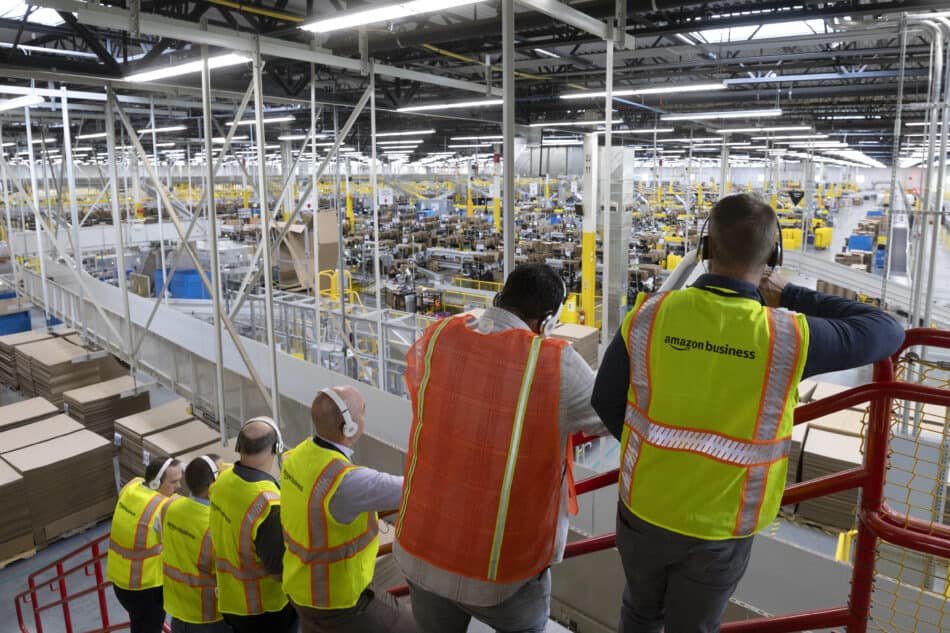

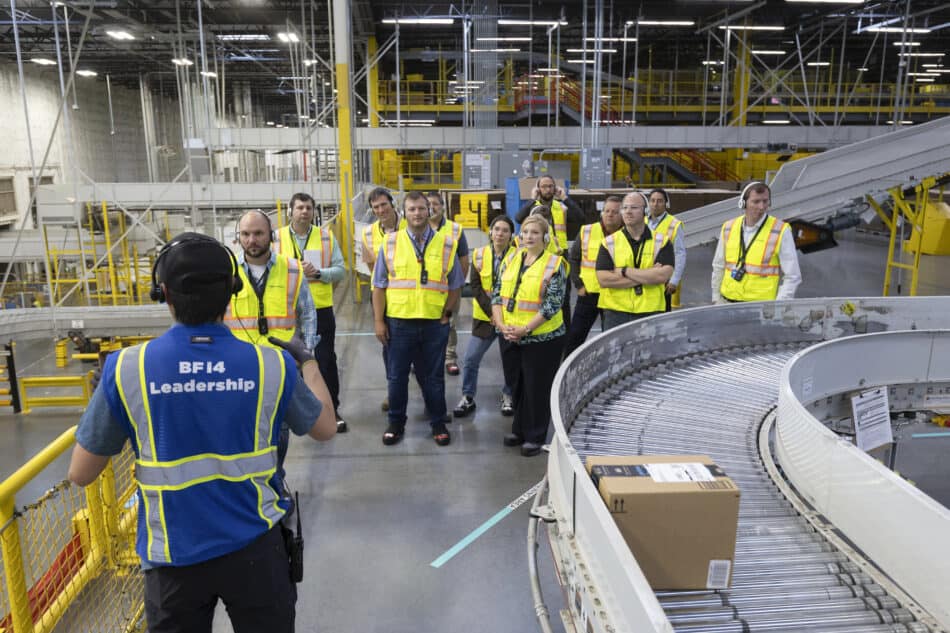

Plant Tour: Enersys
October 8-9, 2024 / Richmond, KY
How does a century-old operation evolve into a benchmark for modern lean manufacturing, assembly and distribution? MLC members found out at a plant tour at Enersys, a producer of batteries and battery chargers, seeing first-hand a playbook for how lean principles join with digital tools and employee-led initiatives to enable fast and flexible responses to customer needs.
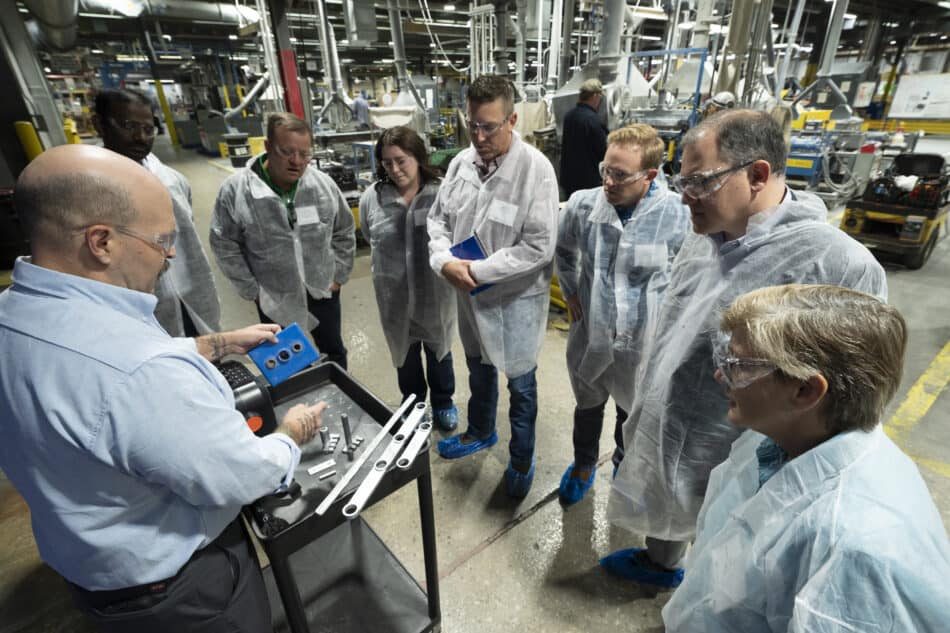

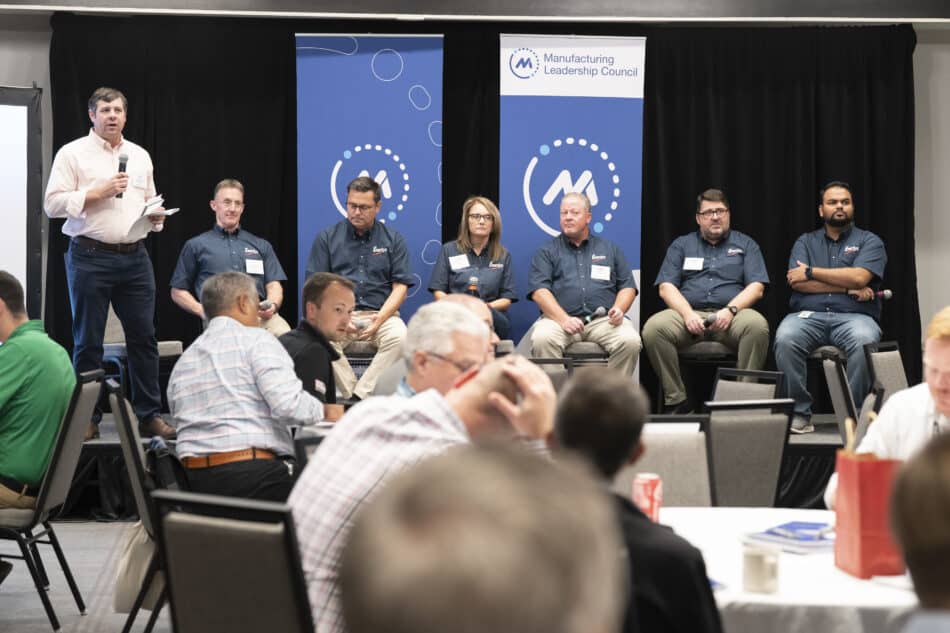

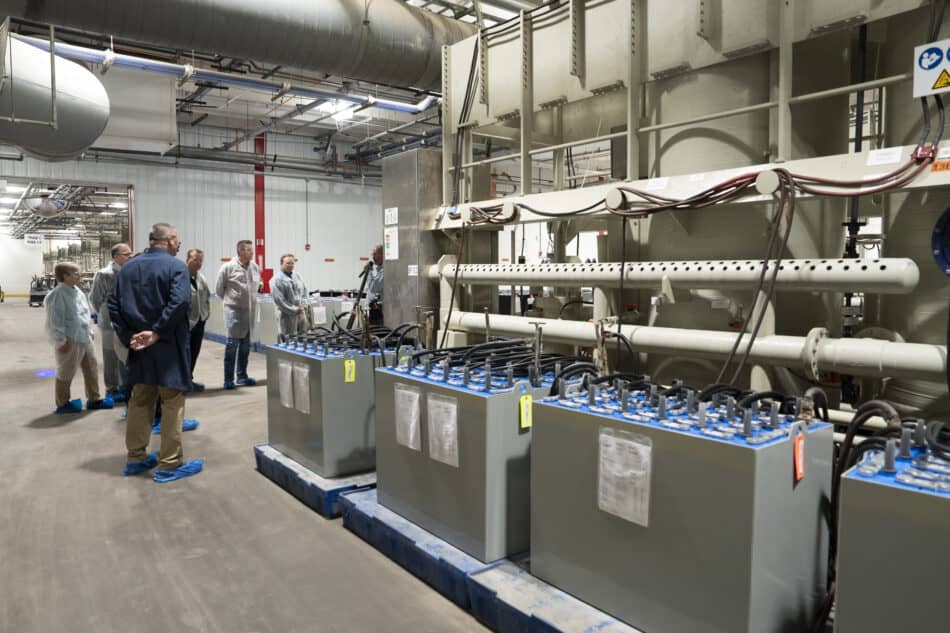
About the author:

Penelope Brown is Senior Content Director for the NAM’s Manufacturing Leadership Council
Get Ready for the Best of Manufacturing Leadership
As 2024 winds down, the Manufacturing Leadership Journal is capping off the year with a special “Best of” issue that celebrates the most impactful moments, insights, and innovations from the Manufacturing Leadership Council. Launching in December, this edition is a treasure trove of highlights showcasing the best content we’ve produced this year — and it’s not to be missed!
Here’s what’s inside:
- Best of MLC Research: Unlock the top takeaways from our groundbreaking research surveys that shaped conversations around Manufacturing 4.0 in 2024.
- Best of Rethink: Relive the energy of our premier event with video highlights from thought-provoking sessions, dynamic panels, and more.
- Best of the Future of Manufacturing Project: Discover insights from this year’s flagship initiative, including highlights from virtual events, Future of Manufacturing Project Crystal Ball articles, and the pivotal survey report, Data Mastery: A Key to Industrial Competitiveness.
- Best of the Manufacturing Leadership Journal: Revisit this year’s standout articles, which are packed with ideas and insights sure to move your Manufacturing 4.0 journey forward.
- Best of Decision Compass Calls: Access this year’s standout Decision Compass calls and hear discussions that provided actionable strategies and inspiration for manufacturing leaders.
Plus, dive into a photo retrospective celebrating the 20th anniversary of Rethink and the Manufacturing Leadership Awards Gala, and exclusive plant tours at EnerSys and Amazon.
In addition to the “Best of” features, this issue includes brand-new content including an introduction to the MLC’s newest members, a Future of Manufacturing Project article by EY, and an exclusive Executive Dialogue interview with Angela Accurso, co-winner of the Manufacturing Leadership Award for Next-Generation Leadership.
This “Best of” edition is your chance to reflect on the strides made in manufacturing leadership this year and gear up for the opportunities ahead. Be sure to check it out this December to celebrate and learn from the best of 2024!
Nominations Open for the 2025 Manufacturing Leadership Awards

Nominations for the Manufacturing Leadership Council’s flagship awards are now open.
What’s going on: The Manufacturing Leadership Awards—given annually by the MLC, the NAM’s digital transformation arm—honor manufacturing companies and leaders for the groundbreaking use of digital manufacturing. Those interested in submitting company and/or individual names for consideration for the 2025 awards can do so through Jan. 17, 2025.
- Awards will be given in nine project categories and three individual categories. New for 2025 are Business Model Transformation (for projects) and Women in Manufacturing 4.0 (for individuals).
How they’re evaluated: For the individual categories, the judges—a panel of established digital manufacturing experts from outside the MLC—assess whether nominees have advanced digital transformation at their companies and whether they meet the criteria for being role models to other manufacturing leaders.
- For the project categories, judges evaluate how each undertaking improved manufacturing processes, furthered business goals and advanced company strategy.
What happens next: Finalists will be notified in March 2025 and announced shortly afterward. Winners will be announced at the Manufacturing Leadership Awards Gala next June.
- “The Manufacturing Leadership Awards give the MLC the chance each year to honor some of the remarkable people and endeavors in manufacturing today,” said MLC Senior Content Director Penelope Brown. “We look forward to reviewing the nominations and learning more about the incredible innovation taking place in our industry.”
Get involved: Have a person or project in mind for the 2025 Manufacturing Leadership Awards? Submit their names here.
- MLC members receive one complimentary project entry and one complimentary individual entry.
EnerSys Tour Offers Immersive Lean Manufacturing Insights
MLC members explore lean ecosystems, advanced battery production, and agile fulfillment strategies at EnerSys' Richmond facility.
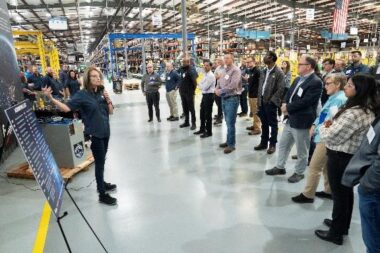
EnerSys’ Richmond, Kentucky, facility opened its doors to Manufacturing Leadership Council members, offering a first-hand look at how a century-old operation has evolved into a benchmark for modern lean manufacturing, assembly and distribution. The visit was more than a tour—it was an immersive experience into lean principles that are not just deployed but embedded holistically across processes, people, and locations. The EnerSys Operating System and the integration of traditional and advanced battery production demonstrated the power of scalable lean ecosystems that operate seamlessly in both legacy and digitally transformed environments.
The Richmond site produces battery chargers and batteries, some weighing as much as two tons. The batteries produced in Richmond include traditional lead-acid motive power batteries for industrial equipment, maintenance-free thin plate pure lead (TPPL) batteries, and lithium-ion batteries. Tour participants made their way through the company’s Mega Distribution Center and the battery manufacturing facility.
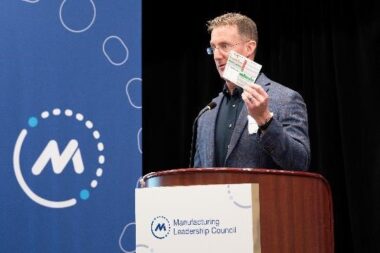
One highlight of the tour was EnerSys’ innovative 24-hour “book-and-ship” program, demonstrating how lean principles have enabled fast and flexible responses to customer needs. Visitors also observed how EnerSys identifies and eliminates waste to improve efficiency and enhance sustainability. This included a deep dive into how employee-led initiatives, coupled with digital tools, have driven continuous improvements in product quality, workplace safety and other areas.
These employee-led initiatives play a critical role in driving continuous improvements in quality, safety, and operational performance. Tour attendees were also invited to engage directly with these processes by completing Accountability Tag cards—an exercise EnerSys employees regularly use to spot and address operational deficiencies. The cards prompted participants to document potential problems, propose quick fixes, and complete a 5 Whys analysis to uncover root causes.
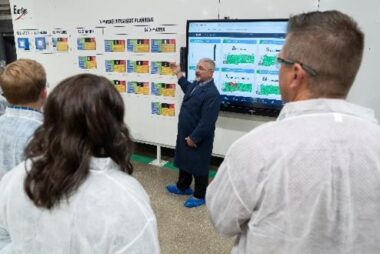
The tour concluded with two breakout sessions and a panel discussion and Q&A session where EnerSys leaders answered participants’ questions. The company’s leaders focused on the challenges of scaling the EnerSys Operating System, the role of technology in their processes, and what’s next for the company.
Participants left the event with actionable insights to apply within their own organizations. Many were inspired by EnerSys’ ability to seamlessly blend traditional manufacturing with modern technology, proving that even legacy operations can achieve agility and innovation.
All photos by Ian Wagreich / National Assoc. of Manufacturers, Copyright 2024
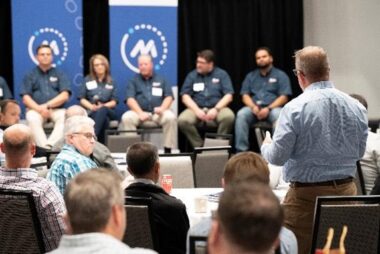
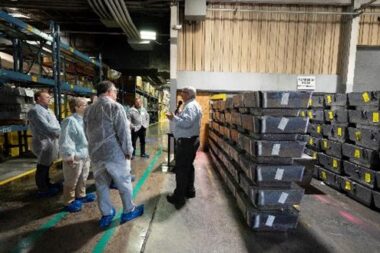
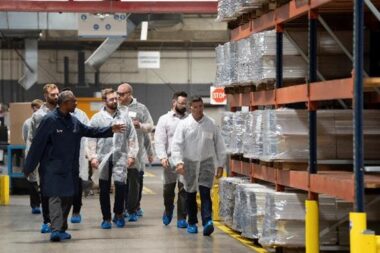

How Manufacturers Can Use Industry 4.0 to Attract Gen Z
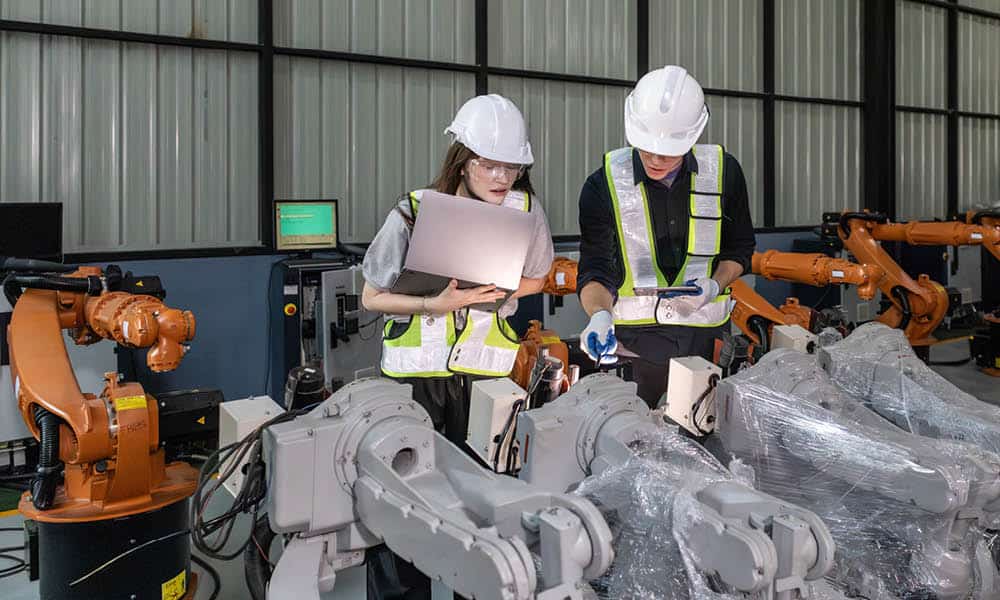
Industry 4.0 technologies offer novel ways to attract Gen Z talent, a generation that values involvement, autonomy, and purpose in its work.
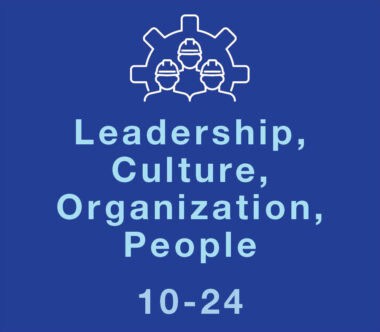
TAKEAWAYS:
● Industry 4.0 technologies that are revolutionizing manufacturing production processes can also shape the worker experience and attract Gen Z talent.
● Manufacturers can use Industry 4.0 technologies for data-driven empowerment, to eliminate repetitive tasks, and to enable collaboration.
● A demonstrated commitment to sustainability can attract Gen Z employees who are deeply concerned about environmental impact.
We’re currently witnessing the convergence of two significant megatrends that are shaping the future of work and the workforce—namely, rapid technological advancements driving Industry 4.0 and the entry of Generation Z (Gen Z) into the workforce. Each trend is incredibly powerful on its own; together, they are creating a unique set of challenges and opportunities that businesses can’t afford to ignore (Table 1).
Table 1: Parallels Between Industry 4.0 and Gen Z
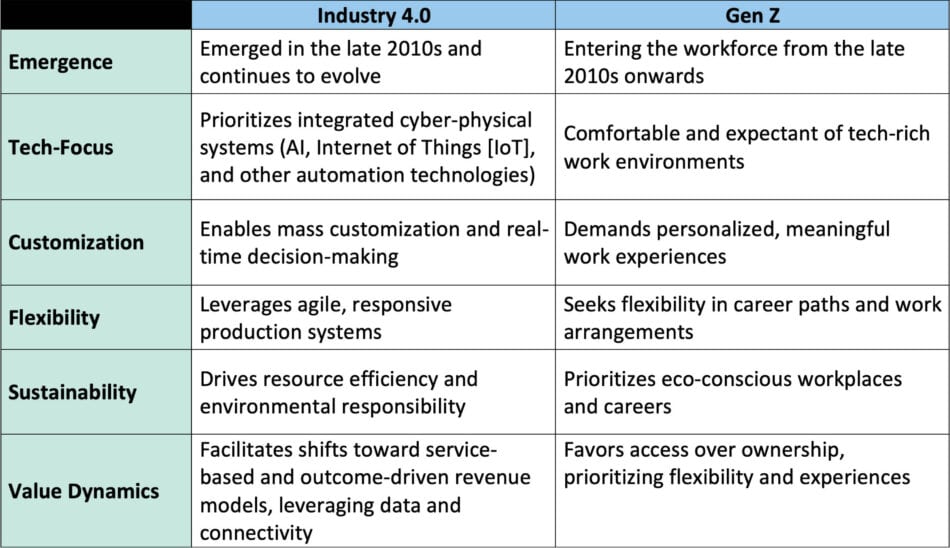
Despite the alignment, traditional manufacturing environments often fall short of the dynamic, purpose-driven workplaces Gen Z expects. According to a McKinsey & Company article, since 2019, the proportion of Gen Z talent in manufacturing has declined, even as more Gen Z workers enter the overall workforce.
How do we bridge the gap between the sleek, digitally optimized vision of Industry 4.0 and the perception of manufacturing environments as gritty and uninspiring in order to attract the very talent needed to drive this transformation?
The solution entails creating a work environment that resonates with today’s employees’ values and expectations. To do this effectively, organizations should redefine the worker experience for productivity and engagement, make manufacturing appealing to the workforce of the future, and embed sustainability as a core value.
Redefine the Worker Experience for Productivity and Engagement
The Challenge: Traditional manufacturing work environments have often been structured around rigid hierarchies and repetitive tasks. This approach is increasingly out of step with the expectations of a younger workforce that values involvement, autonomy, and purpose.
The Solution: Industry 4.0 technologies—such as IoT, AI, virtual twins, collaborative platforms, and automation—are revolutionizing production processes in the factory of the future, and should also form the foundation of the worker experience. These technologies enable a seamless integration between human capabilities and advanced machinery, creating an environment where workers are more than just operators; they become active participants in innovation, decision-making, and problem-solving.
By integrating Industry 4.0 technologies into the workplace, companies can significantly boost employee engagement by creating a more empowering and collaborative environment. Manufacturers can use these technologies to make three significant improvements:
- Data-Driven Empowerment: Provide real-time data access that allows workers to make informed decisions on the spot, enhancing their control and confidence in their roles.
- Eliminating Repetitive Tasks: Use AI-driven automation to take over mundane tasks, enabling employees to focus on creative and impactful work.
- Enabling Collaboration: Implement platforms that facilitate direct communication and idea-sharing between workers and management, ensuring that employee insights drive continuous improvement.
Together, these elements create a complete ecosystem where employees are not just participants but active drivers of progress, leading to higher satisfaction, motivation, and overall productivity.
Make Manufacturing Appealing to the Workforce of the Future
The Challenge: Manufacturing has a serious image problem—high turnover rates, perceptions of dirty and mundane work, and a lack of clear career paths make it difficult to attract and retain talent.
The Solution: Manufacturing can draw lessons from how the software industry reinvented itself to attract young talent. The evolution of manufacturing will likely follow a similar path—by aligning with values that matter to younger generations.
Table 2: Engagement Strategies and Software Industry Lessons
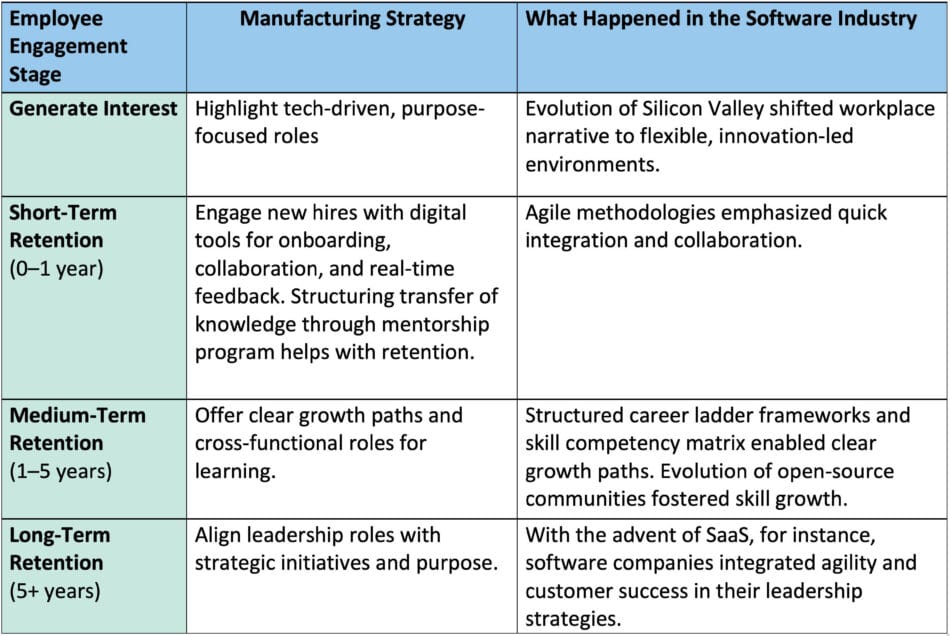
Manufacturing leaders are already innovating by merging traditional Lean practices with Industry 4.0 technologies such as digital Lean boards, automation, and remote collaboration. This shift positions manufacturing as more aligned with the tech-driven expectations of the emerging workforce, setting the stage for broader industry transformation.
Embed Sustainability as a Core Value
The Challenge: Sustainability is no longer a “nice to have”—it’s a non-negotiable expectation from both consumers and employees, particularly among younger generations who are deeply concerned about environmental impact.
The Solution: Companies need to go beyond greenwashing and integrate sustainability into every aspect of their operations. A key way to achieve this is through the use of virtual twins, which enable companies to fully integrate sustainability into their operations from the outset. By creating detailed digital replicas of processes and products, organizations can simulate, test, and optimize in a virtual environment before moving to real-world implementation. This approach helps identify waste, reduce resource use, and streamline production, ensuring that sustainable practices are embedded from the design stage onward. By using virtual twins as a strategic tool, companies can ensure that sustainability is not merely an add-on but a driving force behind all business decisions.
The convergence of Industry 4.0 and Gen Z entering the workforce isn’t just a shift—it’s a call to action. Companies that recognize this intersection as an opportunity to reinvent how they attract, engage, and retain talent will be the ones that stay ahead.
What’s Next?
Manufacturers must start by evaluating their current employee experience and identifying areas where Industry 4.0 technologies can empower workers rather than simply automate tasks. Invest in digital platforms that encourage real-time collaboration, build clear career paths aligned with upskilling opportunities, and integrate sustainability into core operations. Most importantly, engage directly with Gen Z employees to understand their values and expectations—co-creating solutions with them will ensure that the workplace is both future-ready and appealing to the talent needed to drive this transformation. The time to act is now, and those who do will shape the workforce of tomorrow. M
About the author:

Buddhi Ratawal is a manager in the Strategy & Marketing Team at Dassault Systèmes.
Seeing the Unseen: Observability in Manufacturing
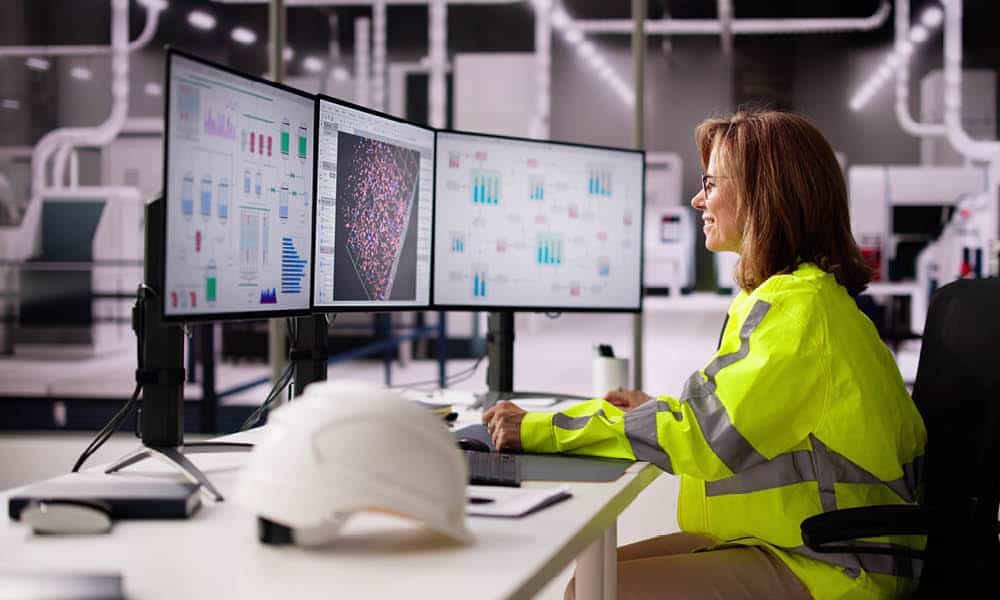
Apply software observability to manufacturing to bridge the gap

TAKEAWAYS:
● Leverage observability principles to gain real-time insights into your operations, empowering your team to make faster, data-driven decisions that enhance efficiency.
● Adopt digital technologies to break free from geographical constraints, enabling remote monitoring and control that optimize your production processes globally.
● Implement computer vision and AI to revolutionize your manufacturing, improving efficiency, safety, and overall operational excellence by capturing and analyzing real-world data.
The software industry has experienced a seismic shift with the introduction of observability. Gone are the days of guesswork and reactive problem-solving. Today, software systems boast unprecedented transparency, empowering engineers to comprehend system behavior, swiftly identify anomalies, and fine-tune performance. As the manufacturing sector embraces digital transformation, the principles of software observability offer a powerful framework for achieving operational excellence.
Central to software observability is the ability to collect, process, and analyze real-time operational data. Metrics, logs, and traces provide granular insights into system health, performance, and user experience. In manufacturing, this translates to machine sensor data, quality control reports, production line performance metrics, and more. By correlating this data, manufacturers can gain unparalleled visibility into their operations, paving the way for data-driven decision-making and continuous improvement.
Imagine a manufacturing landscape where processes are as meticulously version-controlled as software code. Every assembly line configuration, machine parameter, and quality control check is systematically recorded and traceable. This level of control, once a distant aspiration, is now within reach as manufacturing and the digital realm converge.
Software observability principles relevant to manufacturing extend beyond data. A fundamental shift has occurred in the relationship between humans and computers. In the past, software engineers were tethered to physical machines, often working in close proximity to the hardware. Today, the majority of software development is cloud-based, with engineers accessing and managing systems remotely. This decoupling of geography from computation has opened up new possibilities for collaboration and innovation.
Leveraging remote monitoring and control allows manufacturers to oversee operations from anywhere, detect issues early on, and respond swiftly to minimize downtime.
Similarly, manufacturing can benefit from breaking free from geographical constraints. Traditional manufacturing models often necessitate proximity to suppliers and labor pools. While these factors remain important, observability and digital technologies introduce a new level of flexibility. By leveraging remote monitoring and control, manufacturers can oversee operations from anywhere, detect issues early on, and respond swiftly to minimize downtime. This capability is invaluable for global operations and in scenarios with limited on-site personnel.
However, unlike the digital realm, where data is inherently observable and repeatable, the physical world introduces complexity. Quality issues, for example, often stem from analog faults that are difficult to capture digitally. To address this, manufacturers need to go beyond traditional logs and incorporate rich video and metadata to accurately represent the state of the real world.
To fully unlock the potential of observability in manufacturing, computer vision systems will be instrumental. By digitizing the physical world through video, manufacturers can capture a wealth of information about processes, equipment, and personnel. Advanced computer vision platforms can then analyze this video data to extract actionable insights, identify anomalies, and optimize operations. For instance, by tracking the movement of objects on a production line, computer vision can pinpoint bottlenecks and inefficiencies. By analyzing worker behavior, it can identify safety hazards and optimize ergonomics. The fusion of video data and AI-powered analysis will be essential for achieving the level of observability needed to revolutionize manufacturing.
The principles of software observability offer a compelling blueprint for reimagining manufacturing operations. By approaching production processes as software systems and harnessing technologies like computer vision, manufacturers can attain unprecedented levels of visibility, control, and efficiency. M
About the Author:

Eric Danziger is CEO and Co-Founder of Invisible AI.
Invisible AI is a proud partner of MLC’s Future of Manufacturing Project.
